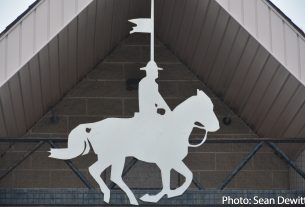**** Info via Environment Canada
December temperature outlook via Environment Canada
November began unequally, with very large temperature differences developing between Canada’s western and eastern regions. British Columbia and the southern half of Alberta and Saskatchewan saw a colder-than-average November, while the rest of the country experienced warmer-than-average conditions.
Record-breaking cold mixed with snowy conditions swiped throughout British Columbia, Alberta and Saskatchewan, while the east saw some of the warmest November temperatures ever recorded.
Many temperatures records were broken:
- Toronto Pearson airport made it to a new November record of 25.2 °C with temperature records going back to 1937;
- Halifax set a new November record of 20.8 °C with records going back to 1871; and
- Fredericton set a new record of 23.1 °C with temperature records also starting in 1871.
More seasonal temperatures quickly followed the warm temperatures in eastern Canada. By the end of the month, the snow had made its way accross most of Canada. Snow squalls, caused by cold winter air moving over warmer lakes, brought large amounts of snow and dangerous driving conditions across Ontario, through the middle of the month, with Wiarton being buried under more than 100 cm of snow!
Here is the forecast for the “temperature anomaly” for the month of December. The temperature anomaly is the “difference from normal temperatures” for the entire month.
The forecasts are categorized as follows:
- blue indicates the probability that temperatures will be below normal;
- grey to purple indicates the probability that temperatures will be near normal; and
- yellow to red indicates the probability that temperatures will be above normal.
*All categories are compared to the average of the 30 months of December between 1991 and 2020.
This is a prediction of the anomaly of the mean daily temperature at 2 metres (i.e. at standard temperature observation height). It is not a forecast of the maximum nor of the minimum daily temperature.
Long range forecast user guide.




